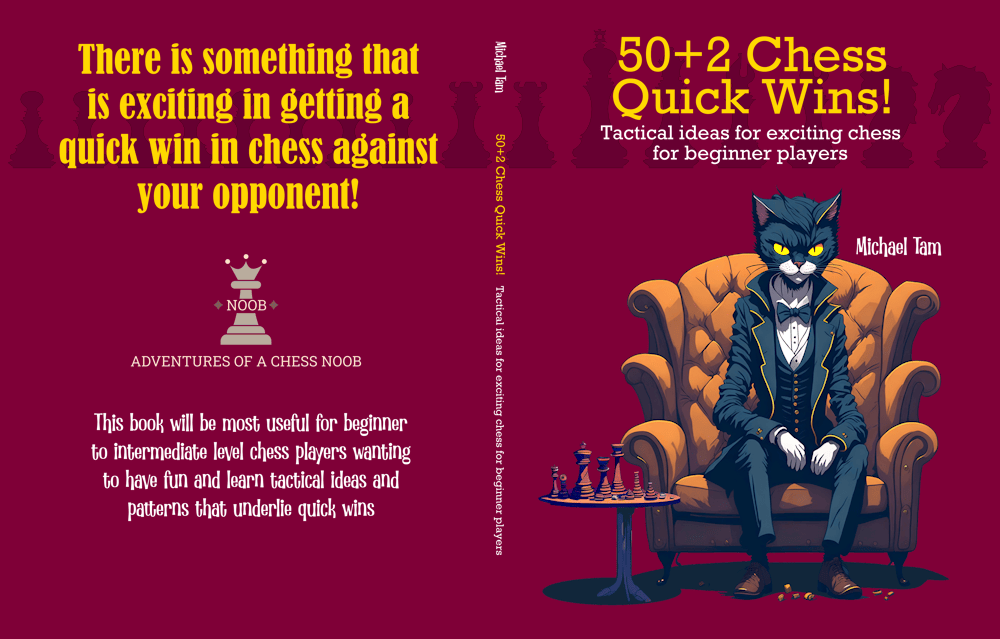
FRITZ the Fried Liver Attack! | AMAZING 33 checks in ONE GAME! 😲♟️😻
#italian #friedliver #twoknights #fritz
If you follow my blog and channel, you’ll know that I like tactical, attacking chess in the romantic style. If you’re new to my blog, hello! 👋 Please consider subscribing to my YouTube channel, follow my blog, and send me a friend request on chess.com! I publish three or four videos a week, each with an accompany blog article that covers my chess journey as a beginner-intermediate player.
A phenomenon observed when playing an aggressive attacking style is that it is often more effective than expected, insofar as compared to engine evaluation. This can be understood from a psychological perspective. By forcing our opponent to focus on immediate threats it, (i) puts our opponent on the defensive, (ii) can create the feeling that they are losing, especially when we gain concessions, and (iii) can result in our opponent losing sight of longer-term strategic considerations as their attention is drawn to the current position. The effect is that we capture the initiative and the flow of the game, and we invite our opponent to make mistakes and blunder!
The following game was a rather unusual 10+5 game of rapid where I played a total of 33 checks on my opponent, which is two-thirds of the 51 moves that I made! In this game, I took an early advantage, blunder that advantage, but then use an extremely aggressive approach to turn the tables! Let’s go!
I had the black pieces in this game, White lead with the Italian, I responded with the Two Knights Defense, and then White attempted to play the Fried Liver Attack (1. e4 e5 2. Nf3 Nc6 3. Bc4 Nf6 4. Ng5 d5 5. exd5). I’ve often responded to White’s Knight Attack with the very tricky Ponziani-Steinitz Gambit (4. Ng5 Nxe4!?), which is a very fun line, but rather unsound.
In this game, I opted to try an uncommon and aggressive counterattack to the Fried Liver Attack, which is the Fritz Variation (5… Nd4). According to the Lichess community database, this is the single most winning line from the position with Black winning 56% to White 41%!

Note:
Alexander Fritz (1857-1932) was a German chess master, who suggested (5… Nd4) to Schlechter, who analysed it in Deutsche Schachzeitung (English: German Chess Magazine), 1904.

Some of the earliest examples of Fritz Variation games in the LumbrasGigabase were played in the early 20th century by Lasker, Englund, and Rubinstein!
A bit of trivia, there is an extremely delicious, and unexpected smothered checkmate line out of the Fritz Variation, which uses the same tactical structure as the Blackburne Shilling Gambit. 🤩
![]()
In this game, White plays the best response with (6. c3) attacking the forward knight, but Black can counterattack White’s bishop with (6… b5). In this position, the “simple” surface level Fried Liver Attack (White’s knight and bishop teaming up to attack Black’s weak f7-pawn) is over. Interestingly, White’s single best move in this position is the un-develop their bishop with (7. Bf1)! In this game, White either didn’t see or couldn’t accept that, and instead, we traded minor pieces, moving the game back to equality [0.00].
On move 9, White’s best move was another unintuitive move, the aggressive (9. Qh5). Instead, they played the seemingly excellent (9. d4), which defends both their advanced e-pawn and g5-knight. However, this was a mistake [-0.9] and fundamentally, White’s pieces are somewhat overextended. And indeed, my counterattack began with (9… Bb4+!), my first check in the game! White’s only good move in the position was another unintuitive move (10. Kf1) – which they didn’t see. They played (10. Nc3??), a blunder, and a couple of moves later the evaluation is [-3] to [-4], White’s pawn structure is damaged on both sides, and the king has been forced to move, losing the right to castle. Although we had piece and material equality, White’s king was exposed, and I was clearly winning!
I chased White’s king with checks, trying to find an “in” but on move 19, made a mistake by being greedy and capturing a pawn (19. Qxh2+). White’s response (20. Rf2!) meant a double attack; their rook on my queen, and their pawn on my bishop. I thought that the bishop was lost so played a desperado (20… Bxf3+), but this was a blunder [-1.2 → +2.7] as I could have counterattacked White’s queen with Be6!
I was annoyed at myself at having made that mistake. I knew that I was probably in a losing position. White had four pieces (rook pair, bishop, and queen), while I only had three (rook pair and queen). I took stock of what I had. My king was safe, and I had a pawn advantage. White’s king was very exposed in the centre of the board. My queen was well developed.
If I allowed White to consolidate or simplify by trading pieces, it will be a loss by attrition to an endgame. So, the strategy is to attack repeatedly, and to see whether it would be possible to regain an advantage from a mistake!
By move 27, I had given 10 checks in a row (!!) and chased White’s king to the corner on h1 with my queen. It seemed like we might be shuffling, and so I offered my opponent a draw. A draw is not losing, it’s a tie! 😅 However, White, being a good sport declined the draw request and we play on!
After this point, it became clear that White was going to shuffle their king towards the queenside and 8 checks later (🤣), finally made a mistake. With (36. Kb3?). If White’s king was in the centre surrounded by their pieces, I had no “in” with just my queen. Although it was correct for White to bring their king back to the centre, their goal should then be to trade queens. However, under the relentless check, White perhaps didn’t recognise that I was trying to corral their king onto the b-file! As with their king on fully open b-file, it gave me an opportunity to activate a rook into the attack (36… Rab8+).
White’s position now collapses. White had one of two choices – move their king to the a-file, which visually seems blunderous and inviting a ladder checkmate (but was actually “okay”), or to block the check with either their queen or bishop. White played (37. Bb4??), probably the most intuitive move in the position, but it’s a blunder! The bishop is pinned to the king and (37… a5!) places pressure on the pinned piece! The evaluation now flips from [+2.2 → -2.7].
More moves, more checks, and manoeuvring with rooks and queen can be quite complicated when one’s king is exposed. White blunders on move 43, missing the impending royal fork (43… Rxd4+). And with the home stretch in view, we had 7 more checks and White resigned on move 51, one step away from checkmate. Good game, GG!
The big takeaway of this game is there is a psychological advantage, and thus, a tactical one in creating repeated attacks. In this game, this was expressed by the relentless checks, eventually driving the opponent into a game changing blunder!



